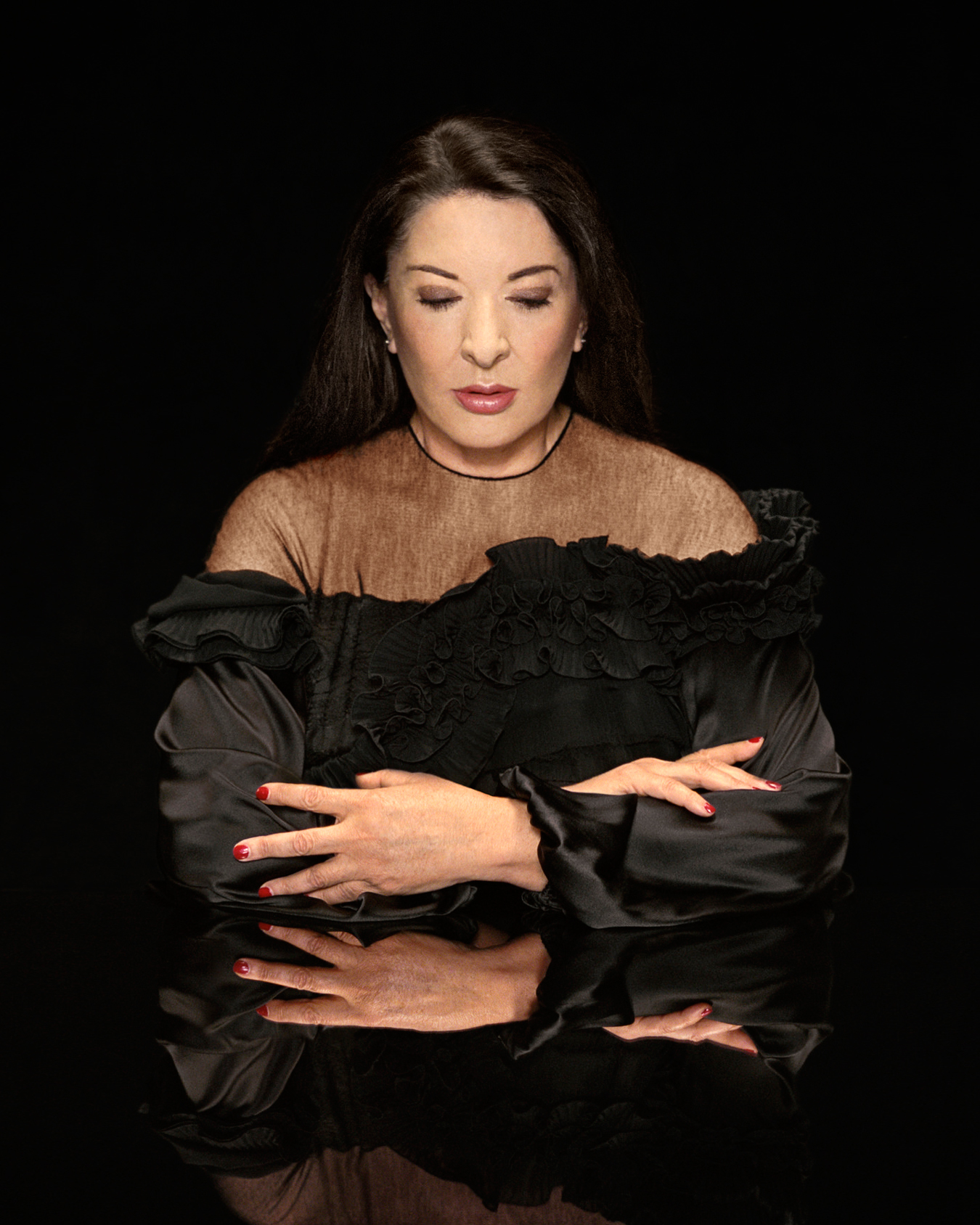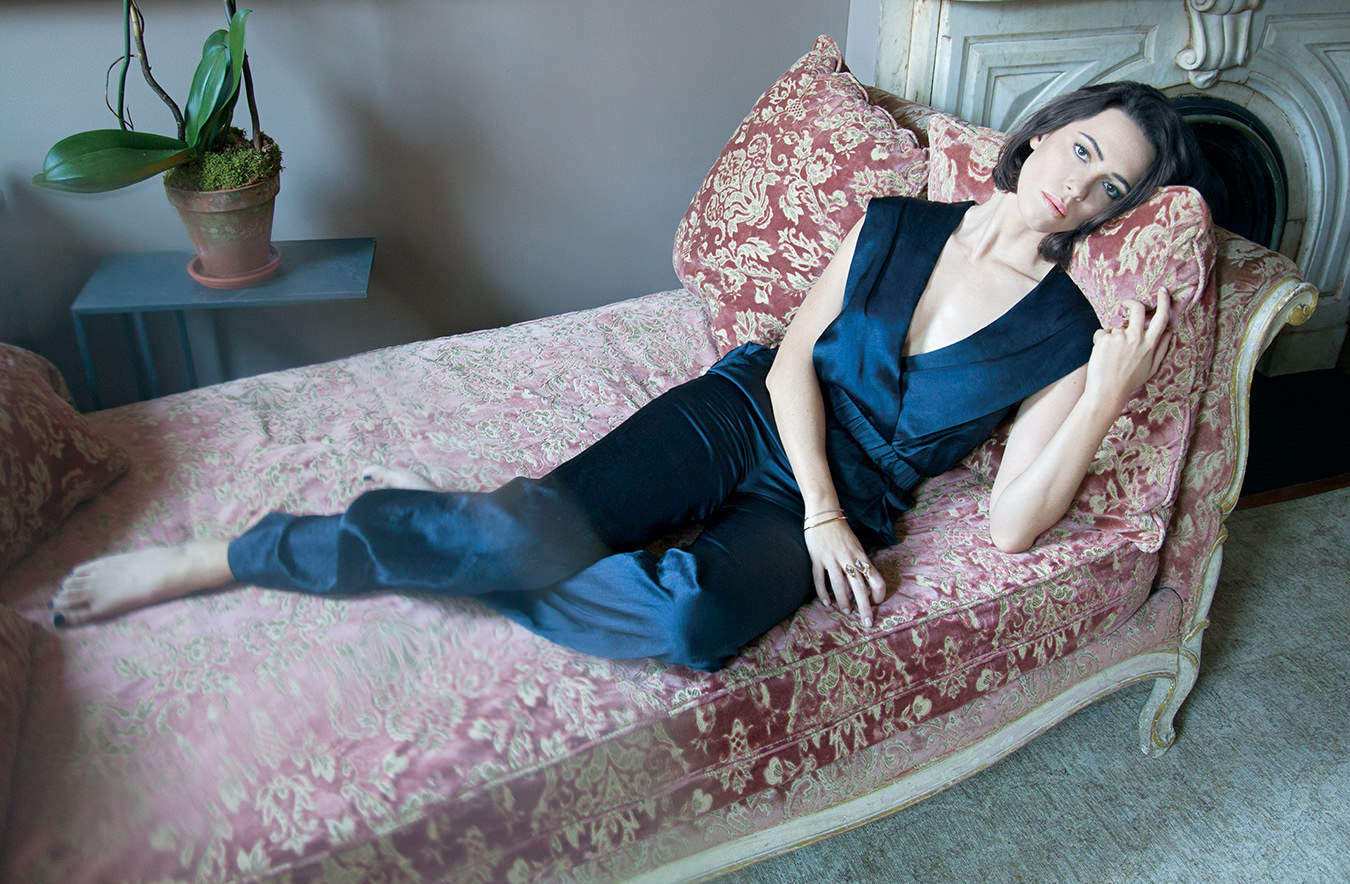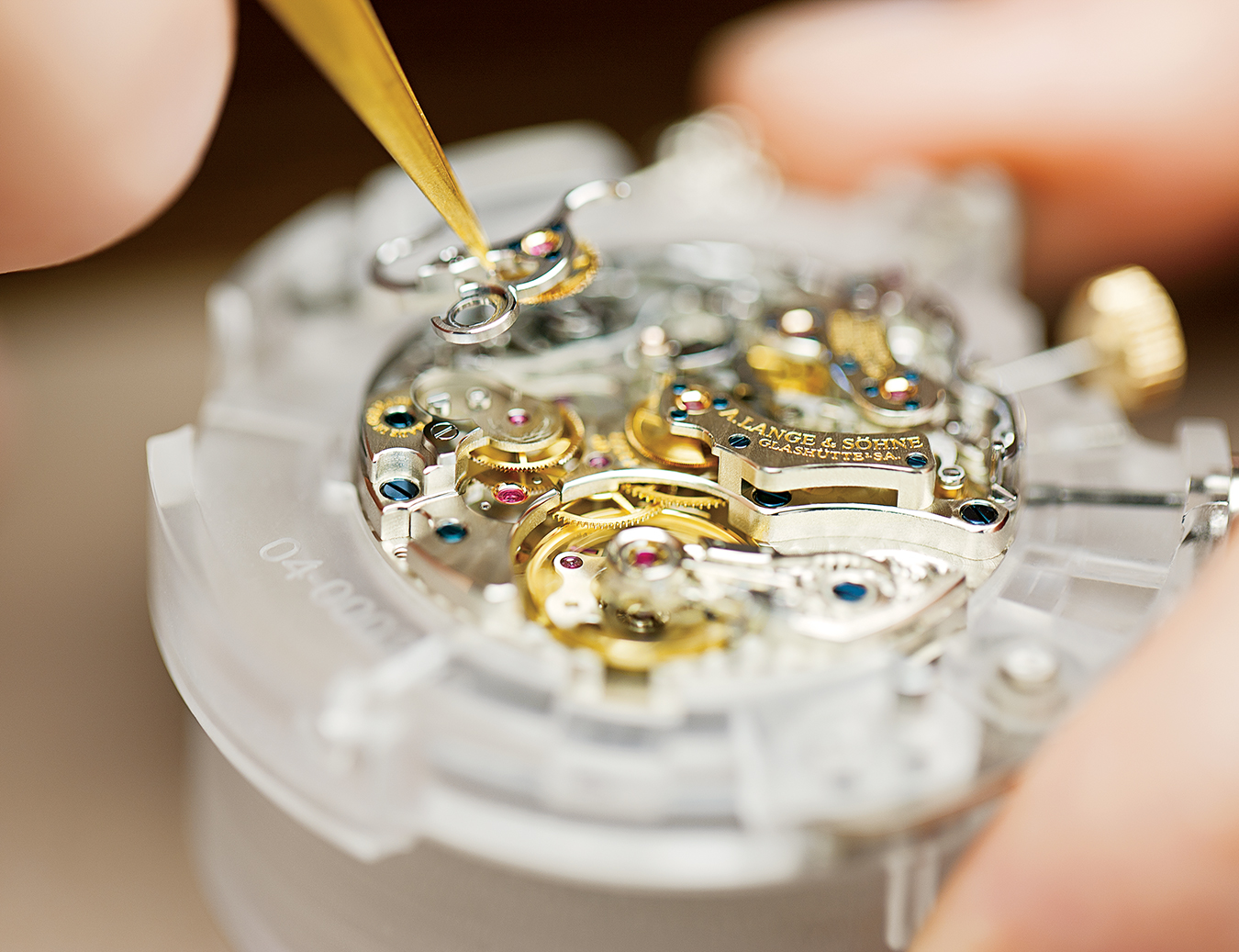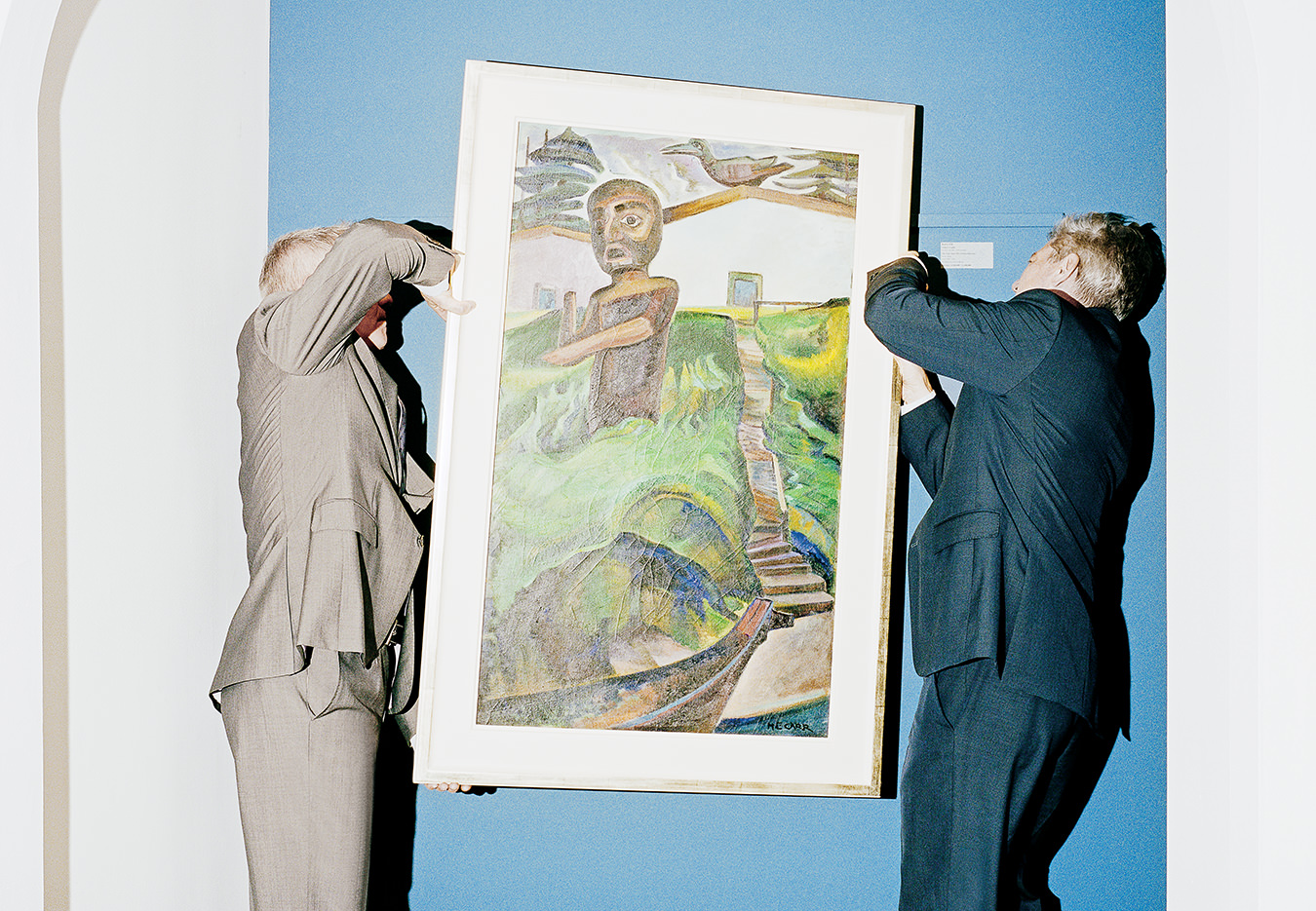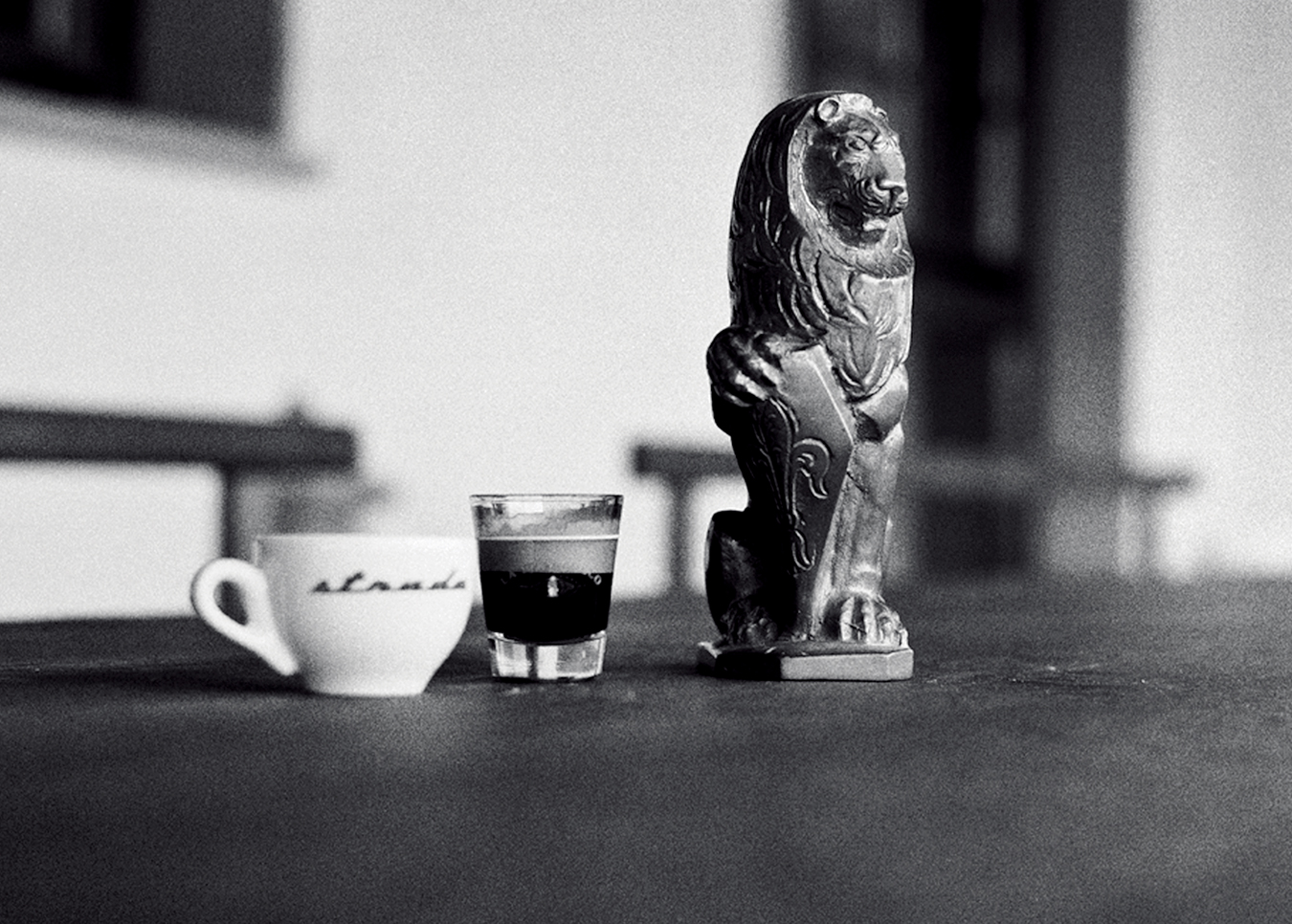Marina Abramović
Body of work.
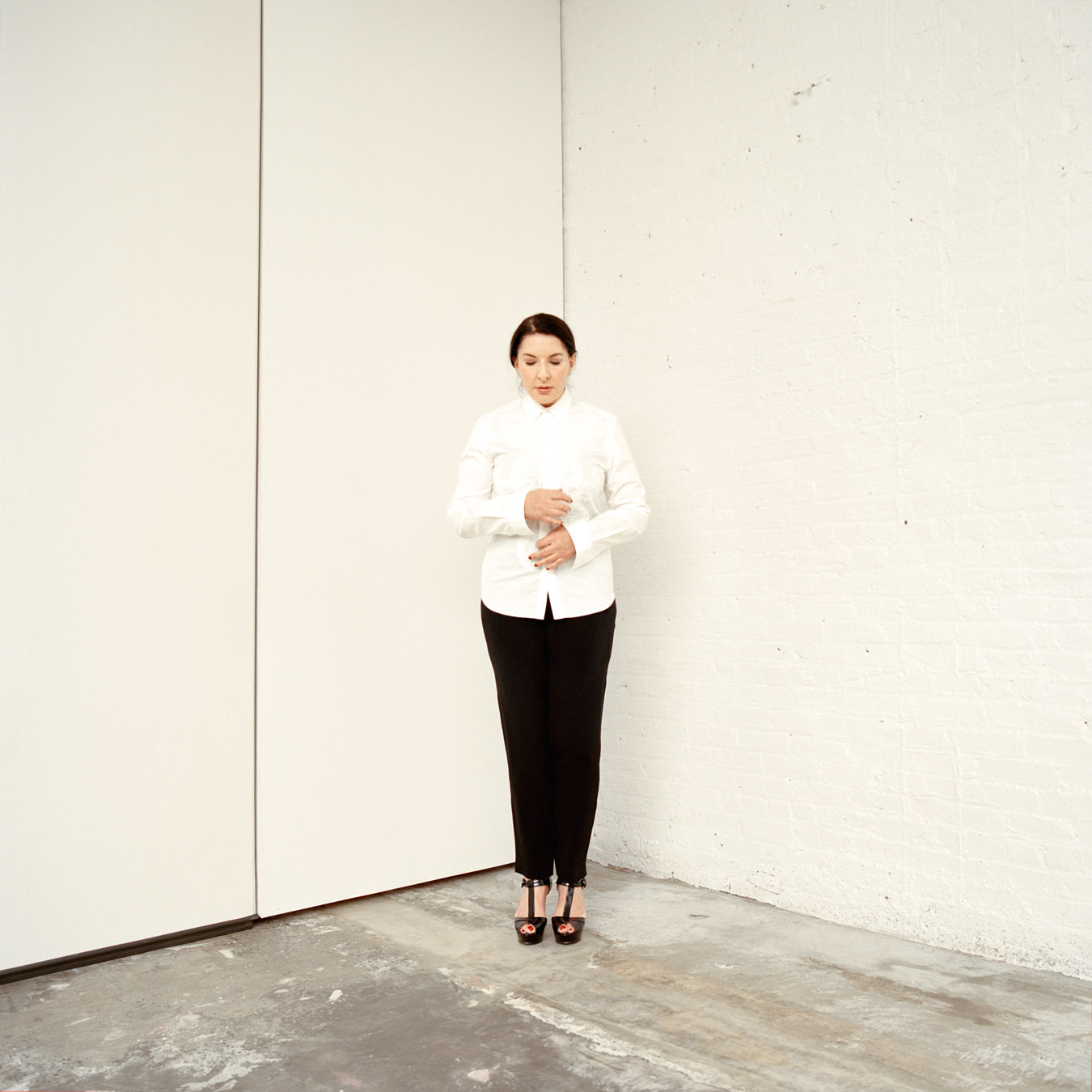
Marina Abramović, treading close to 70, requires no coffee despite the early hour and spurns a proffered bagel in favour of a large Thermos of freshly squeezed juice. She soon hands it to the journalist interviewing her as she riffles through a large bag, from which she produces her iPad: like Chekhov’s gun, the appearance of the device in the first act of the morning meeting (taking place in Manhattan on an early-autumn day) suggests that it will somehow be deployed later, though it’s unclear how. It might contain a copy of her just released memoir, Walk Through Walls—but for the moment, the most famous performance artist in the world has something she wants to address first.
“Your hair!” she exclaims.
Her interviewer—whom she has only just met—is sporting what admittedly resembles a Davy Crockett–style coonskin cap, only made of actual hair and attached firmly to his scalp. This is astonishing to Abramović, whose own coiffure is a perfect black mantle that hangs down her back and seems to blend imperceptibly with the ankle-length black dress, a sort of ultra-elegant cassock, that is among her more well-known costumes. Before the day is out, she will have dragged the journalist in front of a large mirror, indicating the possible advantages of leaving the hair on top of his head untouched while cropping the sides close, the way George Orwell used to wear his. “And what’s wrong with George Orwell?” she asks.
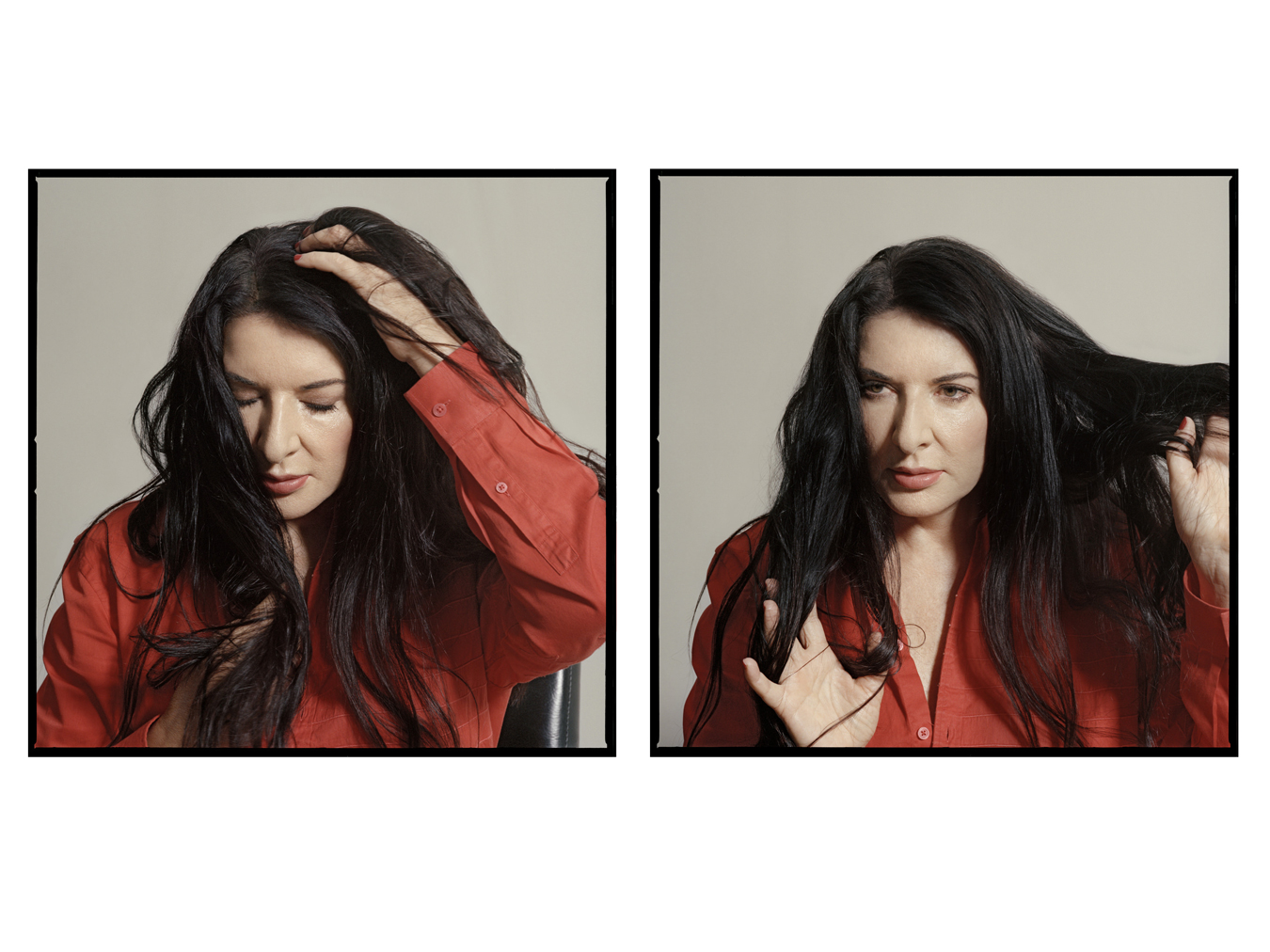 It is hard not to dwell on appearances when speaking of Abramović—a frustrating circumstance given the depth of her practice, as well as the fact that as a female artist, she endures unsolicited comments on the subject fairly regularly. She’s alternately been referred to as “the Helen Mirren of the art world” and “the grandmother of performance art”; even The New York Times Magazine went out of its way to remark on her figure, while the question of whether her art and her artistic persona qualify her as a feminist has made her the object of scorn from factions both pro- and anti-. “Women artists have so much more restriction than men do,” she says. “It’s incredible how, in our society, if artists have lipstick and nail polish, they say they’re no good.”
It is hard not to dwell on appearances when speaking of Abramović—a frustrating circumstance given the depth of her practice, as well as the fact that as a female artist, she endures unsolicited comments on the subject fairly regularly. She’s alternately been referred to as “the Helen Mirren of the art world” and “the grandmother of performance art”; even The New York Times Magazine went out of its way to remark on her figure, while the question of whether her art and her artistic persona qualify her as a feminist has made her the object of scorn from factions both pro- and anti-. “Women artists have so much more restriction than men do,” she says. “It’s incredible how, in our society, if artists have lipstick and nail polish, they say they’re no good.”
And yet Abramović courts such attention through an unapologetic embrace of the media that has seen her splashed on more magazine covers than perhaps any other living artist. “I do whatever I want,” she says, and the exposure has helped her acquire a fan base outstripping that of almost any of her peers—an accomplishment all the more impressive given that her performances can last upwards of five hours.
In her new memoir, Walk Through Walls, Abramović cathartically writes on life, love, art, and loss.
What people come to see is Marina Abramović; what Marina Abramović gives them is her body. To dispatch the basics, then: Abramović is 5’ 8”, but she gives the impression of being much taller. She is slightly stoop shouldered; her nose is prominent to the point of pre-eminence, an issue that has plagued her since childhood and which she once attempted to remedy by deliberately breaking it, hoping her parents would buy her “a Bardot nose”. (It didn’t work.) She has an eager, restive energy that nonetheless can lull you into a state of near hypnosis—a quality she’s cultivated in her work, in which, she says, “I want to create some kind of energy vortex.” She seems, on the whole, very powerful physically, which is also a professional asset, given the marathon endurance tests of walking, sitting, yelling, fasting, and remaining awake to which she routinely subjects herself. In addition, she smiles almost constantly, radiating an authentic warmth and unshakeable ease that is somewhat surprising, given that she has just penned a tell-all memoir that could easily get her in trouble with friends, family, the art world, and the media. But Marina Abramović has never been afraid of a little controversy.
“It was a miserable life,” Abramović says, speaking of her early years. “A miserable time. But it made me a good artist.”
Co-written with author James Kaplan, Walk Through Walls opens with Abramović’s hardscrabble youth in socialist-era Yugoslavia. If it pulls any punches, it’s difficult to think what those might be: Serbia? “Drabness everywhere.” Her childhood home? “Really a horrible place.” Her mother? “Hit me till I was black and blue.” Even the book’s dedication is pithily confrontational, reading simply, “to FRIENDS and ENEMIES.”
As the artist points out, there’s a therapeutic objective behind all this doom and gloom. “I want this book to be inspirational,” she says, “not just for artists but for everybody.” For all its misery, her upbringing imbued her with a sense of the mystical—influenced, in part, by her religiously inclined grandmother—that fuelled her early creative activity. She began as a painter, doing highly figurative work with palettes consisting entirely of greens and blues (because, she says, “My dreams were those colours”), but she later gravitated to the transgressive field of performance art, using it as a form of rebellion and lashing out at the stifling atmosphere of life under a communist dictatorship. Abramović insists that her story is proof that the most improbable ambitions can be realized, no matter how daunting one’s circumstances. “You just have to follow your intuition,” she says.
This, as the book lays bare, has been the motivating impulse behind her work ever since the early 1970s, when she launched herself as a performance artist. In pieces first staged for small audiences in Belgrade, Edinburgh, and Naples, Abramović would take stimulants that made her writhe uncontrollably and depressants that rendered her all but catatonic. She put herself in the centre of a wood-and-petrol-soaked star and set it on fire (dangerously passing out from smoke inhalation), all to show people what the human body is capable of. “I liberated myself from my fears,” she writes. “I became a mirror for the audience—if I could do it, they could do it, too.” The art world at the time was much enamoured of performance, an extension of conceptual practice with an innate theatricality that gives it an unsettling, disruptive verve, and Abramović pushed the medium’s potential as far as any of her contemporaries.
In 1976, at 29, Abramović accepted an invitation to perform one of her pieces on Dutch television. Arriving in Amsterdam, she met German-born artist Ulay (real name Frank Uwe Laysiepen) and, as she relates in the book, “We stayed in bed for the next ten days.” This extended canoodling continued, in a metaphorical sense, for the next 12 years as the duo launched a collaborative artistic venture that saw their personalities effectively merged into one. “I think we both felt from the outset that there was something historical about our relationship,” Abramović writes, and indeed there did seem to be something fateful about the pairing—they even have the same birthday (albeit in different years). In one of their shows, the two stalked each other around the room naked, colliding and bouncing off each other; in another, Ulay sewed his mouth shut while Abramović answered audience questions on his behalf. In their final performance in 1988, the two walked the Great Wall of China, each starting from a different end, a feat that took three months of 10-hour-a-day walking. When they met in the middle, they embraced and said goodbye.
Abramović is candid about her failings, both personal and professional, but she seems determined to move forth undaunted. “I just go for it.”
As dramatic as their shared work and life had been, Ulay and Abramović’s artistic practice had been somewhat eclipsed by developments in the art world at large. Performance and conceptual art fell by the wayside in the ’80s as attention (and money) turned once more to figurative and abstract painting. “My generation didn’t continue with performance because it was too taxing,” says Abramović, most of whose peers turned to the making of conventional artistic objects. Not her: unconcerned as ever with what others thought, Abramović persevered, and in time the cultural fulcrum swung back in her direction.
Playing the long game paid off at last with 2010’s The Artist Is Present, a landmark retrospective at New York’s MoMA organized by high-powered curator Klaus Biesenbach. True to its name, the centrepiece of the show saw visitors queue up for hours to sit in a chair opposite Abramović, who would stare intently at them for as long as they chose to remain. The exhibition caused a sensation: in one of its most stunning moments, Ulay appeared, and “Before I knew what was happening,” Abramović writes, “we were both in tears.” Social media was plastered with images of total strangers breaking into similar displays, and soon Abramović found she’d become an idol to a whole new and much younger audience.
Abramović’s success means that Walk Through Walls is ultimately a happy story, and a cathartic one for its author. “Memoirs are like a healing process,” she says. “By going back, you free yourself.” But all that ends well isn’t necessarily well. Five years after their moving reunion at MoMA, Ulay sued Abramović for 250,000 euros for proceeds resulting from their joint work, a case that was ruled in his favour this fall. The memoir itself has already received some scathing criticism—most of it well deserved, by Abramović’s own admission—after an early draft included disparaging remarks about Australian Aboriginal people, among whom Abramović lived briefly in the early 1980s. In the rarified scope of pop singers and high-end collectors to which her stardom has given her access (she even appeared in a Jay Z video three years ago), Abramović the Icon has found herself accused of being too much performance and not enough art. In Paolo Sorrentino’s 2013 film La grande bellezza, she was satirized in the character of an artist who insists that her work is meant to convey a “vibration”, but can’t quite define what a “vibration” is.
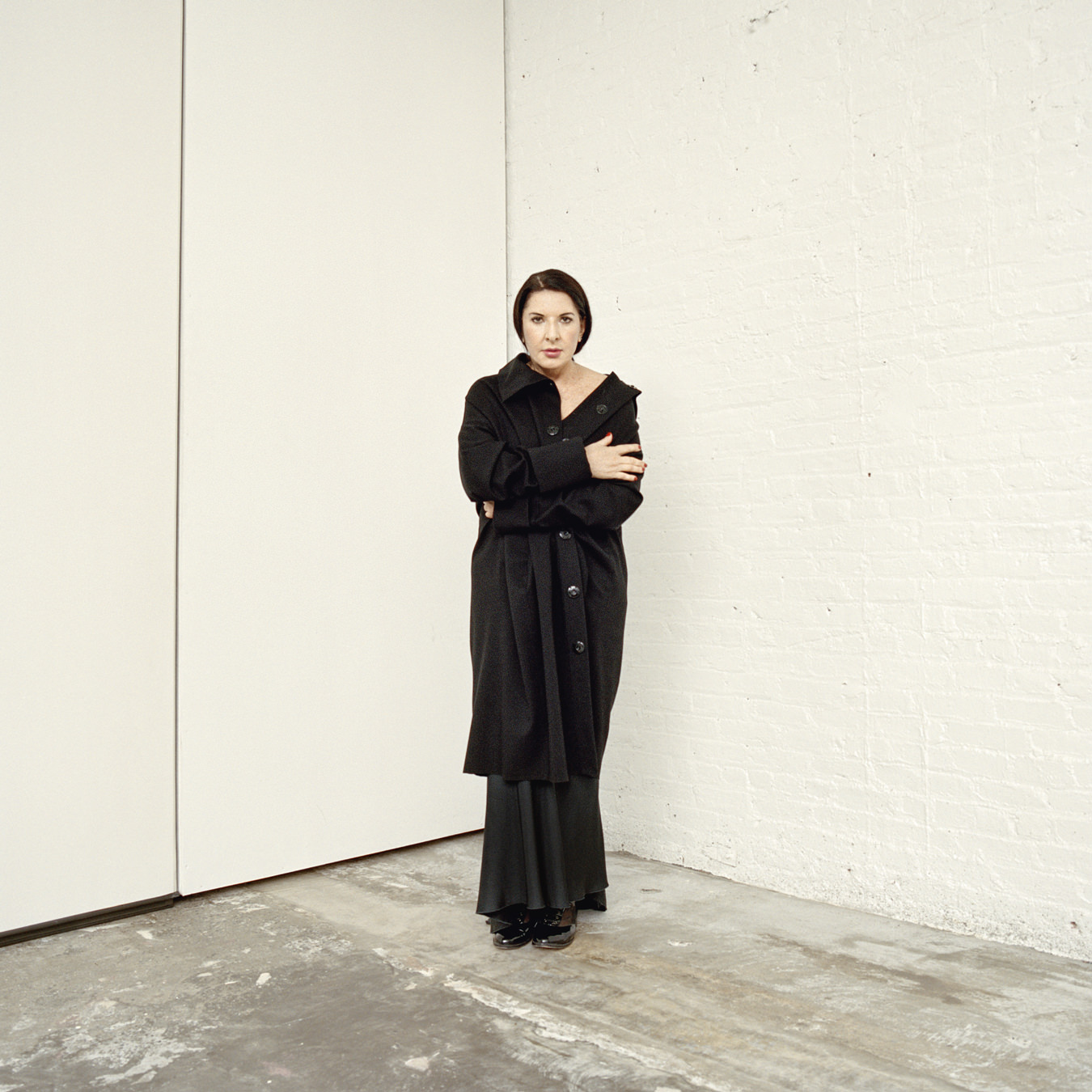
Abramović is candid about her failings, both personal and professional, but she seems determined to move forth undaunted. “If I’d been reading my critics in the ’70s,” she says, “I would never have kept going.”
The whole issue of Abramović’s public profile, and the very public foibles that come with it, exist in a curious relationship with her work. On the one hand, as she notes, “I understand my work as evolving through being in direct contact with people.” To truly understand the uncanny social dynamic of her performances, one really has to be in the room, stumbling around blindfolded, trying to find one’s way through a crowded space and wondering if that person you accidentally groped was Marina herself. At the same time, the artist is constantly seeing herself exposed through other media in ways she can’t always anticipate: her virtues, her vices, and the whole mechanism of her celebrity have all become a part of her performance. This can threaten its effect—“My presence sometimes breaks the presence,” says Abramović—but it also adds to her work’s complex, discomfiting appeal.
Being exposed, warts and all, has been key to Abramović’s approach from the start, back when her mother—incensed that her daughter had appeared onstage naked—nearly accidentally killed her by hurling a glass ashtray at her head. If Abramović sometimes fails, then that, in her view, is the price she pays. “When it comes to doing risky things,” she says in the book, “I don’t care. I just go for it.” Her triumph has been to do what no one in Belgrade in the early ’70s (or even New York in the early ’80s) could have imagined: she’s made performance art something that people care about. And even as she takes her lumps, she seems to be enjoying every minute of it.
Toward the end of the interview, she takes to the iPad. On it, she has dozens of glamour shots that have appeared in publications dating back at least a decade, and she picks each one apart, explaining which she likes best.
“I still think about the old film stars,” she says, still measuring herself against the likes of Brigitte Bardot and Sophia Loren. Performance, after all, exists in the realm of appearances, and for good or ill that’s where Marina Abramović thrives.
Abramović selected her own clothing and wears a Givenchy top.
Styling by Stacey Cunningham for See Management.
Makeup and hair by Sarah Appleby for Bryan Bantry Agency.

